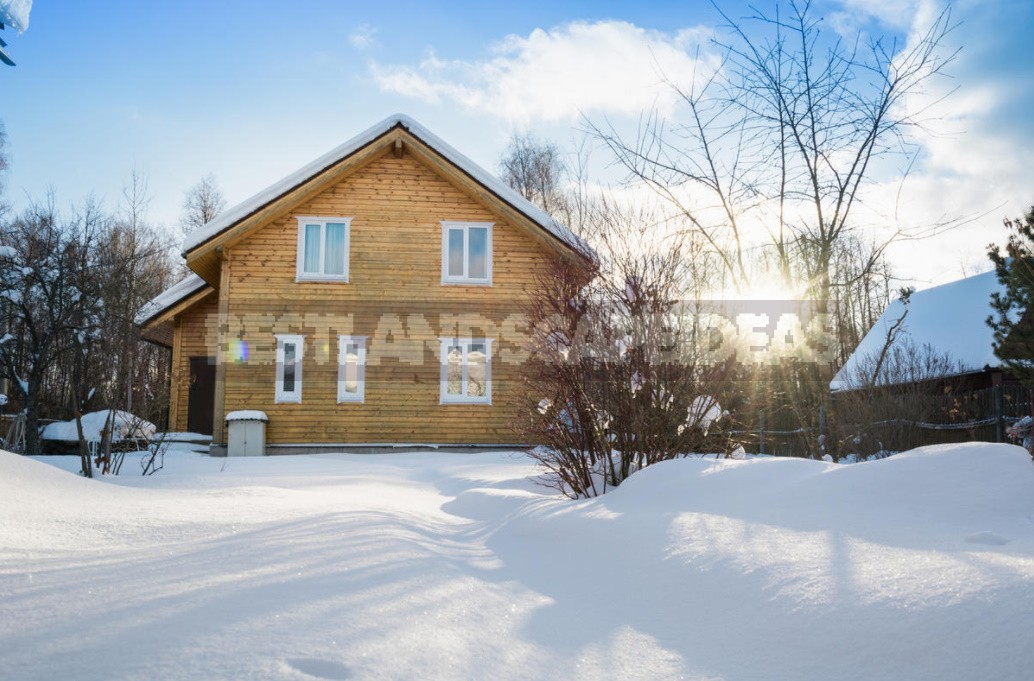
Determining the location for the construction of a house is one of the most important tasks in the development of the site. This will directly affect not only the presence of problems during construction, but also the convenience of subsequent operation of the building. Let’s analyze all the stages of this choice.
Preparation of the plot plan
On the plan of the plot oriented to the cardinal directions, you need to put its borders, the entrance, all existing structures on it and on the land holdings adjacent to it (Fig. 1). It is necessary to indicate on the plan the natural features: the nature of the terrain (general slope, steep slope, lowland), large trees that are not subject to demolition, swampy or waterlogged places. And also-the prevailing direction of the winds, the areas of disclosure of beautiful or, conversely, unsightly pictures of the environment. That is, everything that in one way or another can affect the decision-making.
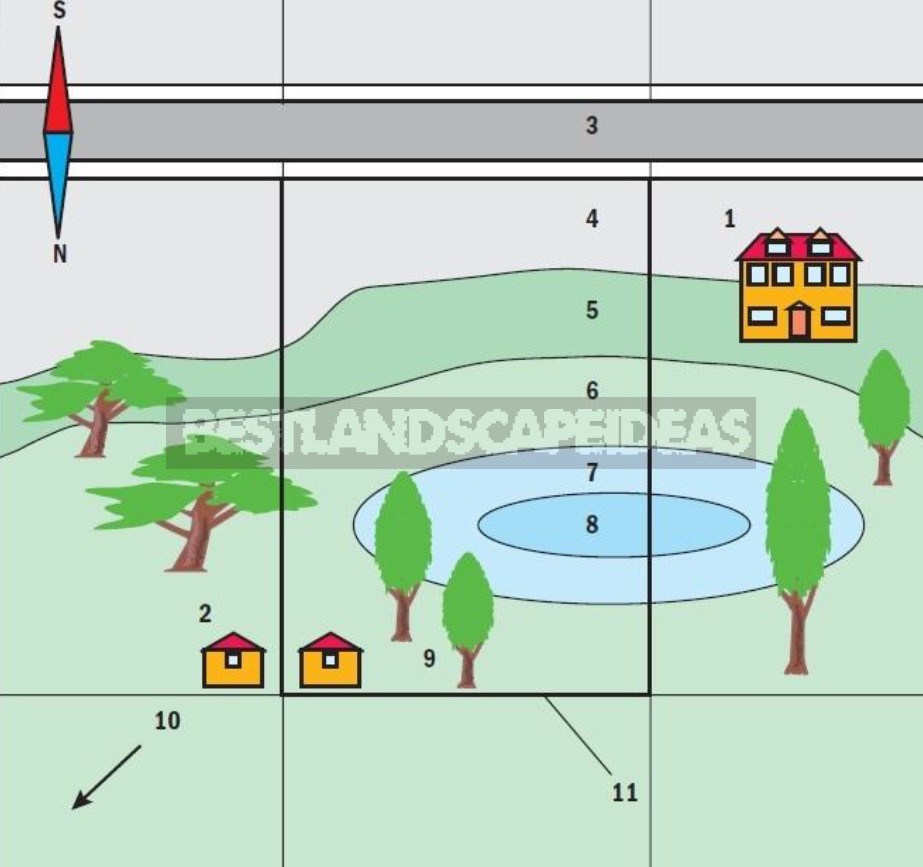
Figure 1. Plot plan in scale: 1-neighbors house; 2-outbuildings; 3-entrance to the house, driveway or street; 4-upper terrace of the plot; 5-steep slope; 6-lower terrace of the plot; 7-local lowering of the terrain; 8-wetland area; 9-trees not subject to demolition; 10-prevailing wind direction; 11 – border of the plot
First, on the plot plan, put all the zones in which construction is prohibited by regulatory requirements or undesirable (Fig. 2). According to the existing standards, the following conditions are mandatory:
- a strip with a width of at least 4.5 m along the border of the plot from the side of the street, driveway or entrance, providing the possibility of organizing the protection of the house from dust, gases, noise and visibility of the premises from the street;
- a strip with a width of at least 3 m along the borders of adjacent sections;
- the area of wind shade from outbuildings and the distance from buildings for keeping poultry and livestock is not less than 4 m;
- an area with a radius of at least 2.5 m around mature trees that are not subject to demolition, for their preservation during the construction of the house.
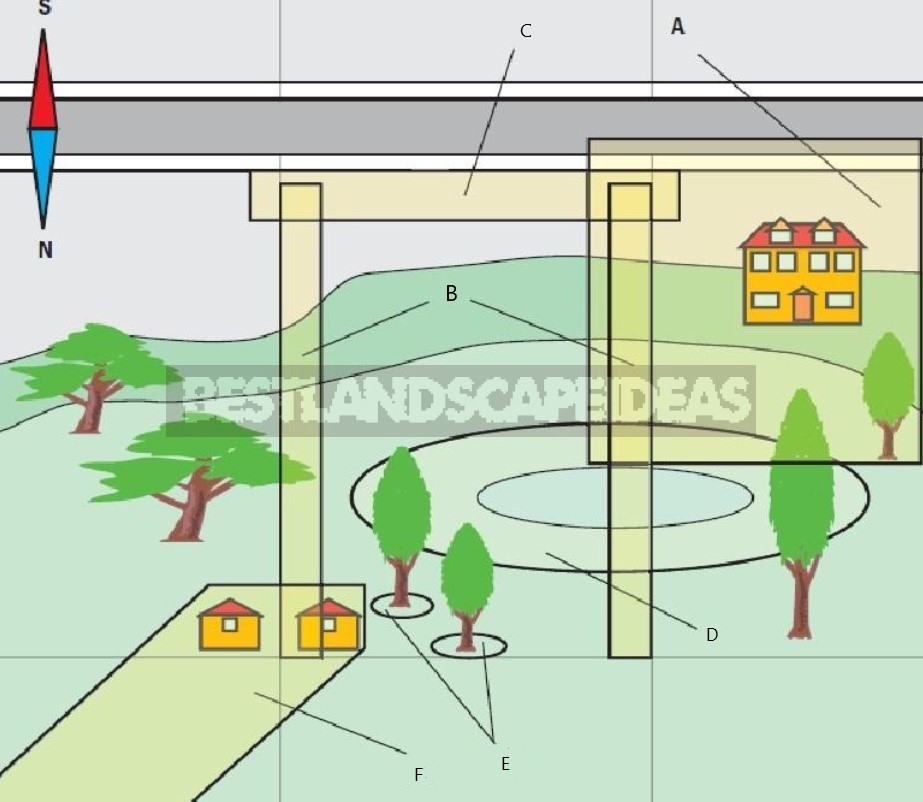
Fig. 2. Zones that restrict the placement of the house: A-the zone of fire-fighting gap between the houses; B-the border zone between the plots; C-the zone of protection from noise, dust, visual viewing from the street or passage; D – the zone of high standing of ground water; E – the zone of protection of large trees; F – the zone of wind shadow from farm buildings
It is necessary to adhere to the mandatory fire safety standards. They are different depending on the material of the walls of the house. Wall materials are classified into:
- A-non-combustible materials (concrete, stone, etc.);
- B — the same base, but with the use of wooden floors or shelters made of non-flammable/non-flammable materials;
- B-frame structures made of wood, combustible/non-combustible / non-combustible materials.
Depending on the class of combustibility (A, B, C), the distances between structures in the built-up areas should be different:
- structures of class A-A – no closer than 6 m, A-B-8 m; A-C-10 m;
- buildings B-B-from 8 m, B-C-10 m;
- buildings C-C — at least 15 m.
The zones of not forbidden, but undesirable location of the house can include part of the territory of the site with a high level of groundwater, low and wetlands-otherwise there will be problems of expensive protection of the foundation and basement of the house from excessive moisture.
If there are restrictions and recommendations of the project of planning and development of the locality, they should also be applied to the plot plan.Now, if you exclude from the territory of the site the area of undesirable or prohibited placement of the house, the part of it on which the placement of the house is possible will be revealed.
Choosing a place for your home
Where exactly to place the house on the remaining territory: to the left, to the right, in the middle, to move closer to the center of the zone or, on the contrary, to move to its borders? The basis for reasoning at this stage is the ideas for the use of the site: its purpose, functional, planning and landscape organization.
If the main task is to maximize the use of land for growing crops, then it is more economical to place the house near the boundaries of the zone. If you want to use the site mainly for recreation or for creating unusual landscape paintings on it, then the placement of the house should be subordinated to this idea. In any case, when placing the house, you should take into account the size of the shadow from it on the plot and choose such a position in which sun-loving plants will not be shaded.
In addition, at this stage, you should reserve space for possible expansion of the house in the future: the construction of additional residential or utility rooms, a garage, a greenhouse, a winter garden or a terrace.
Orientation of the house
At the selected location, it is necessary to orient the building (Fig. 3) in such a way as to create the best conditions for living and using the site. At the same time, the following points should be taken into account:
- the windows of the living rooms should be oriented to the south, east or north-east, the common rooms – to the west or, less preferably, to the south-west, since in this direction it is possible to overheat the rooms;
- the best view from the windows and terraces;
- convenience of entering the house and entering the garage;
- minimal tracing of the road and the connections of the house with the plot;
- the inability to view the premises from the street and the neighbor’s plots;
- the best view from the street.
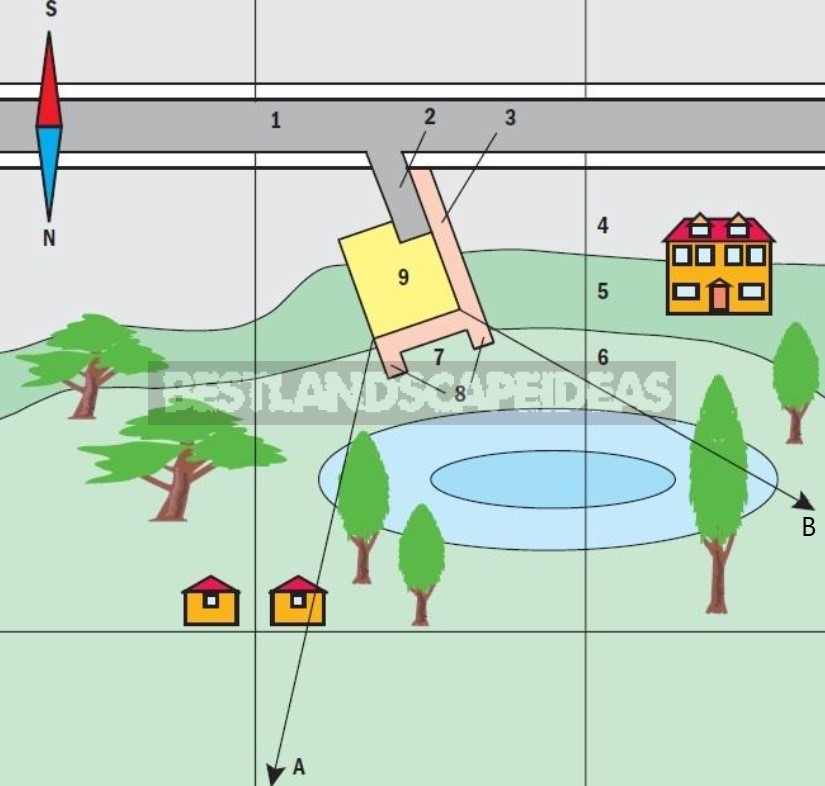
Fig. 3. The layout of the house on the plot: 1-access road; 2 – entrance to the garage; 3-entrance to the house; 4-upper terrace of the slope; 5-slope; 6-lower terrace of the slope; 7-terrace of the house; 8-descents from the terrace of the house to the garden; 9-residential building; A-B-area of disclosure of the view from the balcony and from the terrace of the house
We will do without problems!
Very often, ignorance of the current restrictions turns into the fact that it is almost impossible to put a house in compliance with the norms on a seemingly good plot purchased. For example, it turns out that after excluding all areas that are not suitable for building a house, a very narrow or too small part of the plot remains, on which it is no longer possible to place the structure you have planned. Sometimes it is a strip only 5-6 m wide!
If you still purchased a non-standard plot (narrow, very small, irregular shape or on steep terrain), it will be very difficult to find a suitable ready-made project for it. The bank of standard solutions is not rich in such options. The only solution in this case can be the development of an individual project of the house, suitable for the site, or the adaptation of a more or less suitable standard project under atypical conditions. Although both are always many times more expensive than buying a suitable ready-made project.
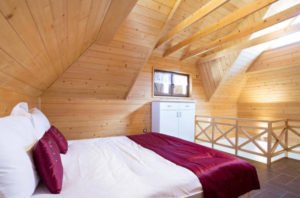


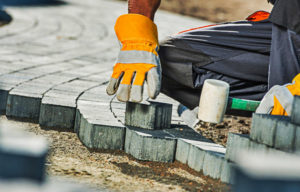
Leave a Reply